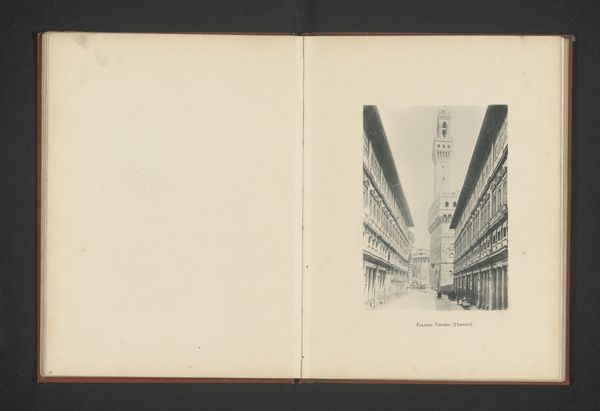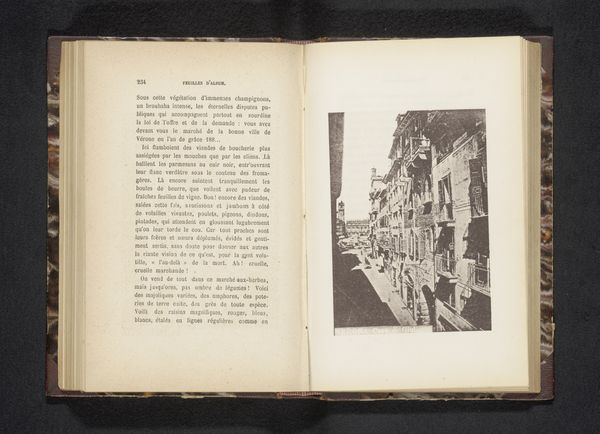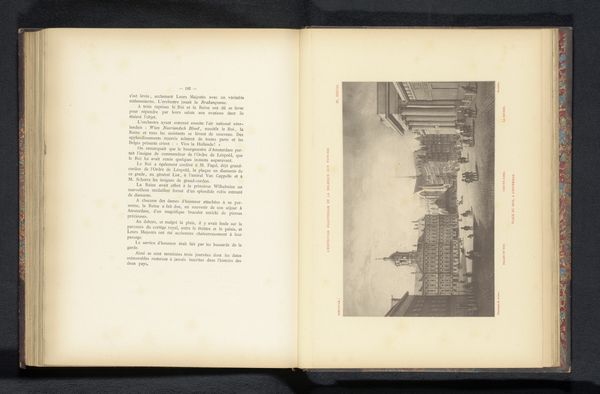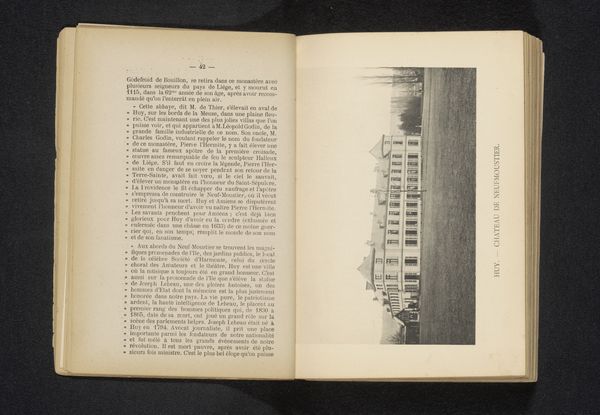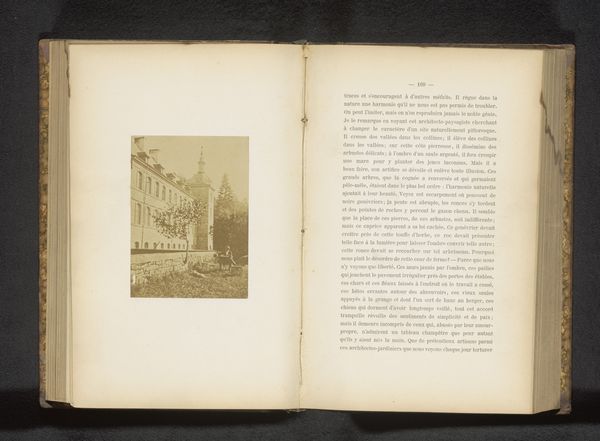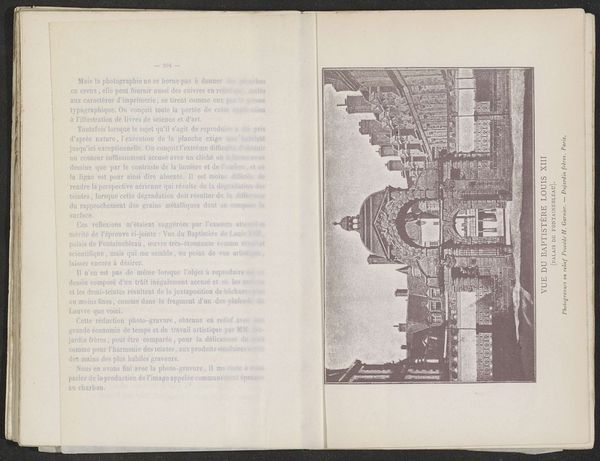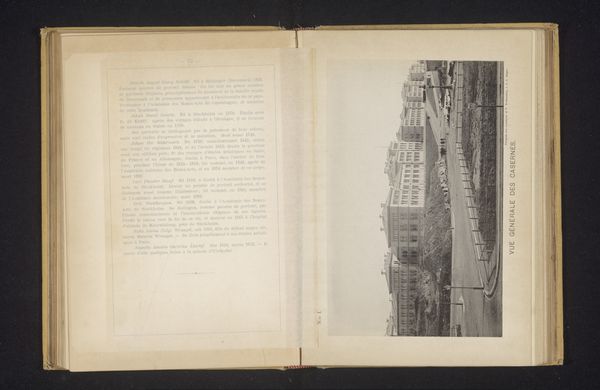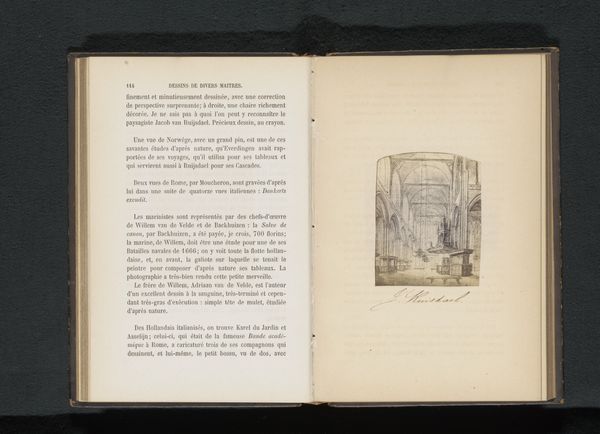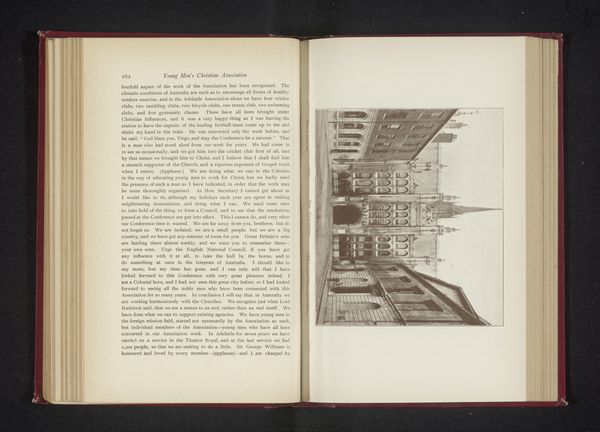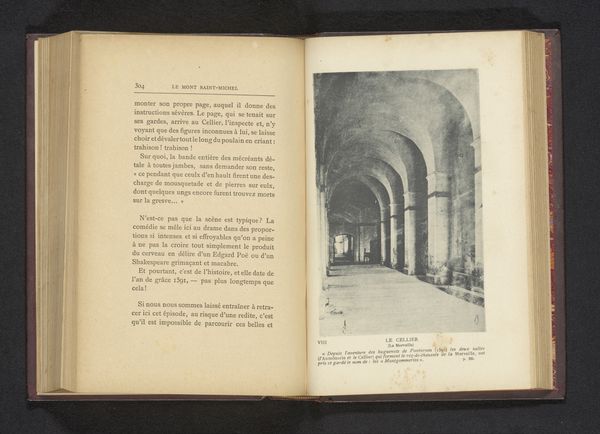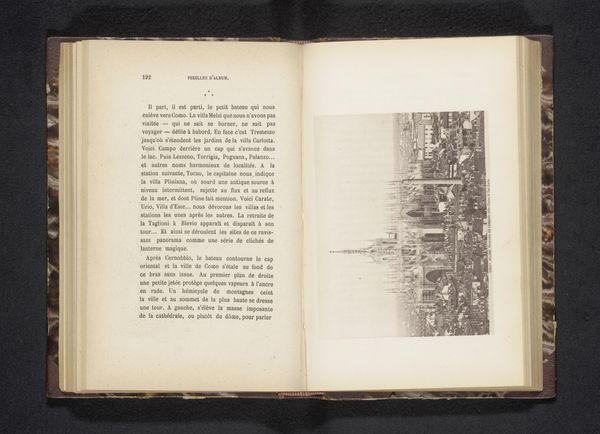
Dimensions: height 137 mm, width 107 mm
Copyright: Rijks Museum: Open Domain
Curator: This photoprint offers a view of the Palazzo degli Uffizi and the Palazzo Vecchio. Though the artist is anonymous, we know it was created before 1889. Editor: It feels like stepping back in time, the linear perspective drawing my eye straight to that imposing tower. It exudes power and authority. What do we know about its place in Florence's socio-political sphere? Curator: Well, the Uffizi, initially designed as offices, became a gallery, reflecting changing power dynamics. This photo situates those grand structures in the broader narrative of Florence as a political and cultural centre, shaped by wealthy families and institutions vying for influence. Editor: Absolutely. And the image's monochrome palette further highlights the stone facades, almost erasing the present, which, to my mind, brings forth ideas concerning legacy, enduring power, and, ultimately, who has the privilege of having their image cemented in history. Curator: Precisely. The straight lines and the almost sterile absence of people lend it an aura of control and order, suggestive of Baroque principles. Considering its possible creation date, late 19th century, one might analyze this depiction as emblematic of bourgeois aspirations to capture and solidify the city’s visual identity during a time of social upheaval. Editor: Do you think its creation through photography changed how cityscapes were perceived? Could photography democratize image creation, pushing against traditionally exclusive views curated by powerful entities? Curator: It certainly challenged traditional artistic hierarchies, though photography also carried its own biases and access limitations, and its impact extended towards democratizing cultural imagery to new publics and even helping to codify colonial projects, architectural preservation movements and heritage tourism ventures, among other sociopolitical processes. The print's material form suggests wide distribution, influencing broader cultural understandings of Florence. Editor: True. By looking at images like this within the web of societal shifts, we see how seemingly straightforward art also works as an echo chamber for ideologies and who holds authority in its dissemination. It goes well beyond an artistic landscape! Curator: Indeed. It's a subtle reminder of art’s intertwined relationship with history, authority, and social narratives, particularly those embedded within representations of iconic spaces.
Comments
No comments
Be the first to comment and join the conversation on the ultimate creative platform.
